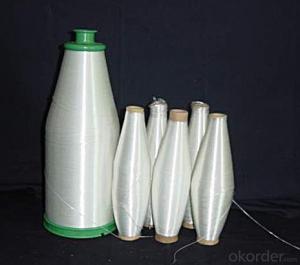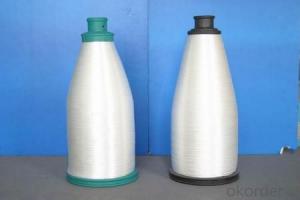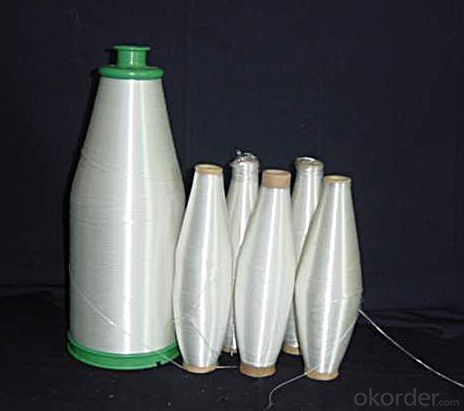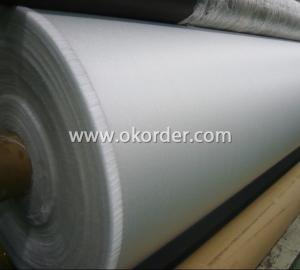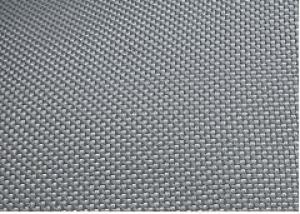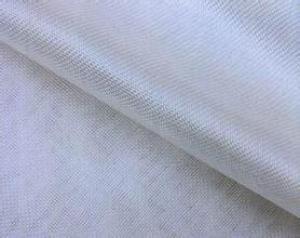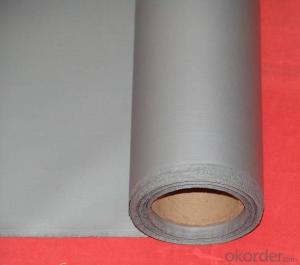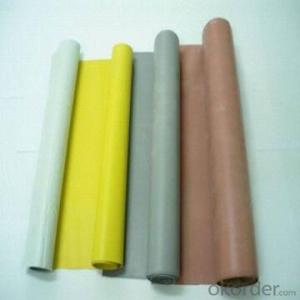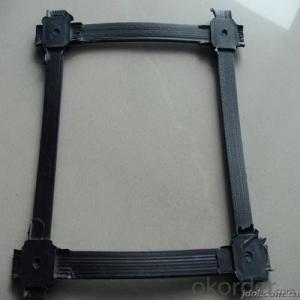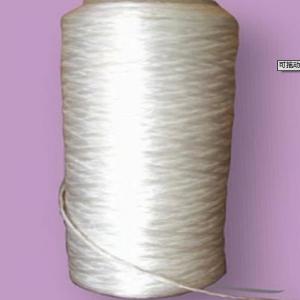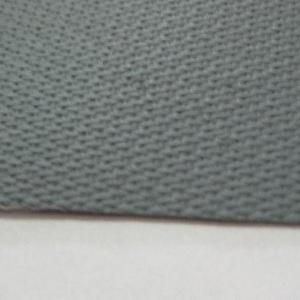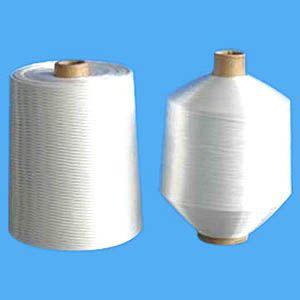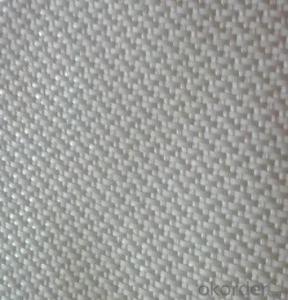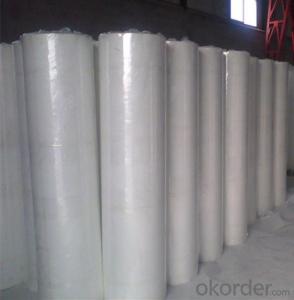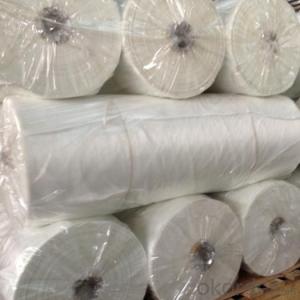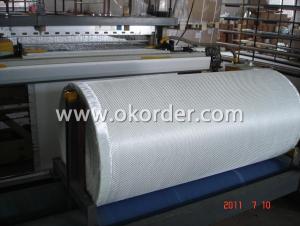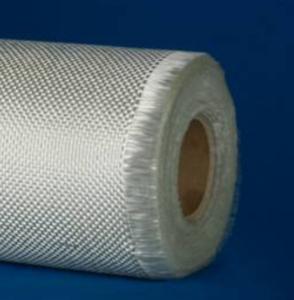Fiberglass Sunscreen Fabric Textile Yarns
- Loading Port:
- China Main Port
- Payment Terms:
- TT or LC
- Min Order Qty:
- 20000 kg
- Supply Capability:
- 200000Kg Per Month kg/month
OKorder Service Pledge
OKorder Financial Service
You Might Also Like
1.Brief Introduction
C or E textile glass a kind of additional twisting and plying yam. With the characteristics of high strength, corrosion resistance, heat resistance and high moisture absorption, no-alkali yam has high electric insulation, so it used to produce weaved wires and cables’ wrap cladding, protection sleeve, train of mine, insulation materials of electric machinery, every yam of woven cloth and other industrial yam. It can also supply big and little paper cube and other cube yams with different shapes and different roll weight.
2.Product Features
Good Dispersibility.
Less fuzzy.
Density Even.
3.Product Specifications
Product Code | Tex | diameter (um) | Sizing. | breaking strength | Twist |
CC7.5-22-1/2 110S | 44 | 7.5 | paraffin | ≥15.5 | 110±10 |
EC9-33-1/2 65S | 66 | 9 | ≥24.1 | 65±5 | |
EC8-25-1/2 65S | 50 | 8 | ≥19.2 | 65±5 | |
CC9-33-1/2 65S | 33 | 9 | ≥20.6 | 65±5 | |
CC11-44-6/0 | 264 | 11 | ≥81.6 | ||
CC11-44-1/3 110S | 132 | 11 | silane | ≥40.8 | 28±3 |
EC9-68-1/0 28Z | 68 | 9 | ≥18.0 | 28±3 |
Special specification can be produce according to customer requirements.
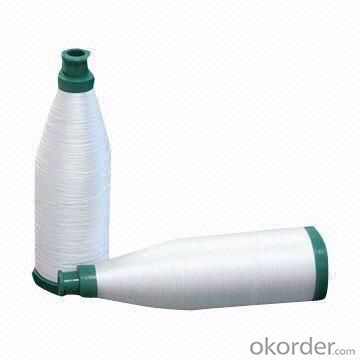
4.FAQ
Storage:
Unless otherwise specified,It should be stored in a dry, cool and rain-proof area. It is recommended that the room temperature and humidity should be always maintained at 15℃~35℃ and 35%~65% respectively.
- Q: Is fiberglass fabric resistant to oil and grease?
- Yes, fiberglass fabric is generally resistant to oil and grease.
- Q: How does fiberglass fabric perform in extreme temperatures?
- Known for its exceptional performance in extreme temperatures, fiberglass fabric exhibits high resistance to heat and can endure very high temperatures without melting or deforming. With a high melting point typically ranging from 1,200 to 1,400 degrees Celsius (2,192 to 2,552 degrees Fahrenheit), fiberglass fabric excels in situations involving intense heat. Furthermore, fiberglass fabric showcases remarkable performance even in low temperatures, retaining its strength and structural integrity in freezing conditions. This characteristic renders it suitable for diverse applications in cold environments, making it a favored choice in industries like aerospace, automotive, and construction, where materials must withstand extreme temperature fluctuations. Moreover, fiberglass fabric possesses excellent thermal insulation properties, effectively impeding the transfer of heat. This quality makes it an ideal material for applications requiring insulation against high or low temperatures, such as thermal blankets, insulation panels, and protective clothing. In conclusion, the ability of fiberglass fabric to thrive in extreme temperatures stands as one of its major advantages. Its heat resistance, durability in low temperatures, and thermal insulation properties establish it as a reliable and versatile material for a wide array of applications in both hot and cold environments.
- Q: Can fiberglass fabrics be recycled or repurposed?
- Fiberglass fabrics possess the ability to be recycled or repurposed. This highly adaptable material can be disassembled and utilized in multiple ways. A common practice for recycling fiberglass involves grinding it into powder and incorporating it as a filler in composite products like concrete, insulation, or even new fiberglass items. This procedure not only reduces waste but also enables the reuse of fiberglass materials. Additionally, fiberglass fabrics may be repurposed by cutting them into smaller segments and employing them as insulation or reinforcement in other substances. These repurposed fabrics find applicability in various fields such as automotive components, boat repairs, or even artistic and craft projects. Ultimately, the recycling and repurposing of fiberglass fabrics contribute to waste minimization and optimal utilization of this resilient material.
- Q: How does fiberglass fabric handle moisture?
- Fiberglass fabric has excellent resistance to moisture and is considered to be highly water-resistant. Due to its composition of woven glass fibers, it does not absorb water and is unaffected by moisture or humidity. This makes fiberglass fabric ideal for applications where exposure to moisture is expected, such as boat hulls, outdoor furniture, and building materials. Additionally, fiberglass fabric does not promote the growth of mold or mildew, further enhancing its ability to handle moisture.
- Q: Can fiberglass fabric be used for making sports equipment?
- Yes, fiberglass fabric can be used for making sports equipment. It is a lightweight, durable, and flexible material that is commonly used in the production of various sports equipment such as kayaks, surfboards, hockey sticks, and bicycle frames.
- Q: Can fiberglass fabric be used for making flexible hoses?
- Yes, fiberglass fabric can be used for making flexible hoses.
- Q: Are fiberglass fabrics suitable for use in medical or healthcare settings?
- Fiberglass fabrics are indeed appropriate for usage in medical or healthcare settings. They possess a variety of characteristics that render them perfect for application in such environments. To start with, fiberglass fabrics are renowned for their remarkable strength and durability. This quality makes them well-suited for items like medical gowns, drapes, and curtains, which must endure frequent handling and washing. The sturdy and tear-resistant nature of fiberglass fabrics ensures their ability to withstand the demanding conditions of everyday use in healthcare facilities. Furthermore, fiberglass fabrics exhibit exceptional chemical resistance, making them commonly utilized in medical settings where exposure to various substances is commonplace. Their high resistance to solvents, acids, and bases renders them ideal for protective aprons, gloves, or masks that provide a barrier against hazardous materials. Additionally, fiberglass fabrics possess excellent thermal insulation properties. This proves particularly advantageous in medical settings where maintaining a stable temperature is crucial, such as in incubators or thermal blankets. The thermal insulation properties of fiberglass fabrics aid in ensuring patient comfort and safety. Moreover, fiberglass fabrics can be manufactured with antimicrobial properties, which play a crucial role in preventing the growth and spread of bacteria and other microorganisms in healthcare settings. The use of antimicrobial fiberglass fabrics in bedding, curtains, or privacy screens helps to diminish the risk of infection transmission. Finally, fiberglass fabrics are lightweight and breathable, enabling proper air circulation and moisture management. This is of utmost importance in medical or healthcare settings, as it prevents moisture buildup, which can lead to the proliferation of bacteria or fungi. The breathability of fiberglass fabrics also ensures patient comfort and reduces the risk of skin irritations. In conclusion, fiberglass fabrics possess a range of properties that make them suitable for application in medical or healthcare settings. Their strength, chemical resistance, thermal insulation, antimicrobial properties, and breathability make them ideal for various purposes in these environments, thereby ensuring the safety, comfort, and well-being of both patients and healthcare professionals.
- Q: How does fiberglass fabric perform in terms of sound absorption?
- Fiberglass fabric performs exceptionally well in terms of sound absorption. Its porous structure and high density make it an effective material for reducing echo and reverberation. It can effectively absorb a wide range of frequencies, making it suitable for various applications such as acoustic panels, soundproofing curtains, and insulation in buildings.
- Q: Are fiberglass fabrics suitable for use in the construction industry?
- Yes, fiberglass fabrics are suitable for use in the construction industry. Fiberglass fabrics are made from fine fibers of glass, which are woven together to form a strong, durable, and flexible material. This makes them an excellent choice for various construction applications. One of the main reasons why fiberglass fabrics are suitable for the construction industry is their high strength-to-weight ratio. They offer excellent tensile strength and are capable of withstanding heavy loads and stresses. This makes them ideal for reinforcing concrete, providing structural support, and strengthening various construction elements like walls, beams, and columns. Furthermore, fiberglass fabrics are resistant to corrosion, chemicals, and moisture. This makes them suitable for use in environments where exposure to these factors is common, such as in coastal areas or industrial settings. Additionally, fiberglass fabrics are non-combustible and have excellent fire resistance properties, which is crucial for ensuring the safety of a building. Another advantage of fiberglass fabrics is their versatility. They can be easily molded and shaped into various forms, making them suitable for a wide range of construction applications. They can be used for creating architectural features, such as decorative panels or facades, as well as for insulation, roofing, and waterproofing systems. Moreover, fiberglass fabrics are known for their excellent thermal and sound insulation properties. This makes them highly desirable for improving energy efficiency and reducing noise transmission in buildings. They can help to maintain comfortable indoor temperatures, reduce heating and cooling costs, and create a quieter and more comfortable living or working environment. In conclusion, fiberglass fabrics are highly suitable for use in the construction industry. Their strength, durability, resistance to various elements, versatility, and insulation properties make them an excellent choice for a wide range of construction applications, contributing to the overall quality, safety, and energy efficiency of buildings.
- Q: How does the weave pattern affect the strength of fiberglass fabric?
- The strength of fiberglass fabric is greatly influenced by its weave pattern. This pattern refers to how the individual strands of fiberglass are intertwined during production. There are various commonly used weave patterns for fiberglass fabric, namely plain weave, twill weave, and satin weave. The plain weave pattern is the simplest and most widely used. It involves an alternating over-under pattern where each strand goes over and under the adjacent strands. This pattern provides good strength and stability in both the warp and weft directions, making it suitable for a wide range of applications. Twill weave, on the other hand, creates a diagonal pattern through the interlacing of strands. This pattern offers better drapability and flexibility compared to plain weave. It also provides enhanced strength and durability, especially in the direction of the diagonal weave. Twill weave is often employed in applications that require increased resistance against wear and tear. The satin weave pattern is the most intricate and complex. It involves strands that float over several adjacent strands before interlacing again. Satin weave produces a smooth and lustrous surface, making it ideal for applications that prioritize aesthetic finishes. However, it sacrifices some strength and stability when compared to plain or twill weaves. To summarize, the weave pattern significantly impacts the strength of fiberglass fabric. While plain weave offers overall strength, twill weave enhances durability and resistance to wear and tear. Satin weave sacrifices some strength for a smoother surface and improved aesthetics. The choice of weave pattern depends on the specific requirements of the application, taking into account factors such as strength, flexibility, and appearance.
Send your message to us
Fiberglass Sunscreen Fabric Textile Yarns
- Loading Port:
- China Main Port
- Payment Terms:
- TT or LC
- Min Order Qty:
- 20000 kg
- Supply Capability:
- 200000Kg Per Month kg/month
OKorder Service Pledge
OKorder Financial Service
Similar products
Hot products
Hot Searches
Related keywords
